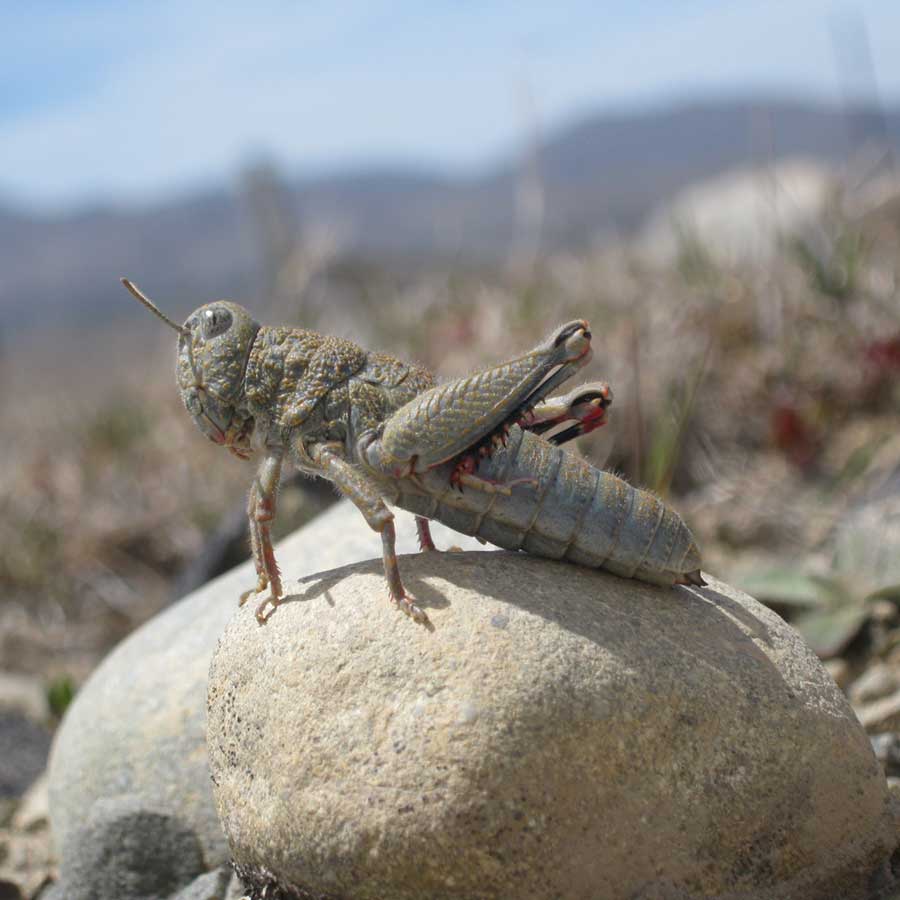“They actually look like a little prehistoric gray tank,” says Simone Smits, manager of the Te Manahuna Aoraki Project in New Zealand. “Most things couldn’t throw themselves around like that. They’ve got an incredible leap on them but while they can jump well they aren’t very good at landing.”
Part of the Robust Grasshopper’s peculiar charm is that it defies most grasshopper characteristics. It doesn’t live in grass, but instead thrives in braided river beds, feasting on lichen growing on the rocks. Its gray color cleverly camouflages it among the gravel, making it difficult to spot unless it flings itself through the air. Female Robust Grasshoppers can grow up to four centimeters long–about the size of your thumb! And the species is very hearty–capable of surviving freezing winter temperatures or blazing hot summers. It is perfectly suited to life in Te Manahuna.
But the grasshopper is classified as Nationally Endangered in New Zealand. There are only a few thousand Robust Grasshoppers in the country, and most of those live in the rivers and terraces of the upper Te Manahuna. New Zealand’s Department of Conservation (DOC) and the Te Manahuna Aoraki Project have been working together to protect the small population of grasshoppers from invasive mammal predators and help their numbers recover.
READ MORE FROM ORIGINAL RE:WILD STORY


